[ad_1]
Apple’s macOS Ventura is the latest and greatest operating system to land on the Mac, and it comes with fantastic features for a range of use cases. But that doesn’t mean it always works smoothly. In fact, it can have frustrating problems and accidents.
Fortunately, there is often a solution at hand. In this guide, we’ve rounded up some of the most common problems you’re likely to encounter with macOS Ventura and linked them to often simple fixes that can make things right again. If you’re having trouble with your Mac, try this guide.
macOS Ventura will not download
Additionally, you should check if you have enough disk space to download the macOS update installer. The installer is about 12 GB, but you need it 25 GB For a backup operating system. If this is still not the problem, find the macOS installer file (it will be in the Downloads or Applications folders) and move it to the trash, then try downloading again.
When you want to upgrade to macOS Ventura, it can be frustrating when you encounter download problems. If this happens to you, the first thing you should do is check your internet connection. If everything is working fine, try Apple’s System Status page (Opens in a new tab) To see if the macOS Software Update service is disabled.
Failed to install macOS Ventura
While the download may not be the problem, there may be other reasons why your macOS Ventura installation failed. First, check that your Mac is compatible with macOS Ventura on Apple’s support page (Opens in a new tab).
If so, try restarting your Mac in safe mode and start the installation again. If you have an Apple silicon Mac (with an M1 or M2 chip), turn off your Mac then Press and hold the power button until you see “Boot Start Options”. Click the volume, then hold Shift and click Continue in Safe Mode. For a Mac with an Intel chip, simply restart your Mac, then immediately hold down the Shift key until the login window appears. Now try installing macOS Ventura in safe mode.
If you still have problems, try resetting the NVRAM. Restart your Mac and then immediately press the button Command, Option, P and R keys at the same time. Launch it the second you hear the startup chime or see the Apple logo.
Unable to sign in to macOS after update
These commands tell your Mac that you are loading macOS for the first time. You will be prompted to create a new administrator user account, after which the login issues should hopefully be resolved.
Sometimes you may experience problems signing in after a macOS update. If this is the case, restart your Mac and hold down the Command and S keys together. This loads a command line window. come in /sbin/mount -uw / and press Return, then type rm /var/db/.applesetupdone and press return again.
AirDrop doesn’t work
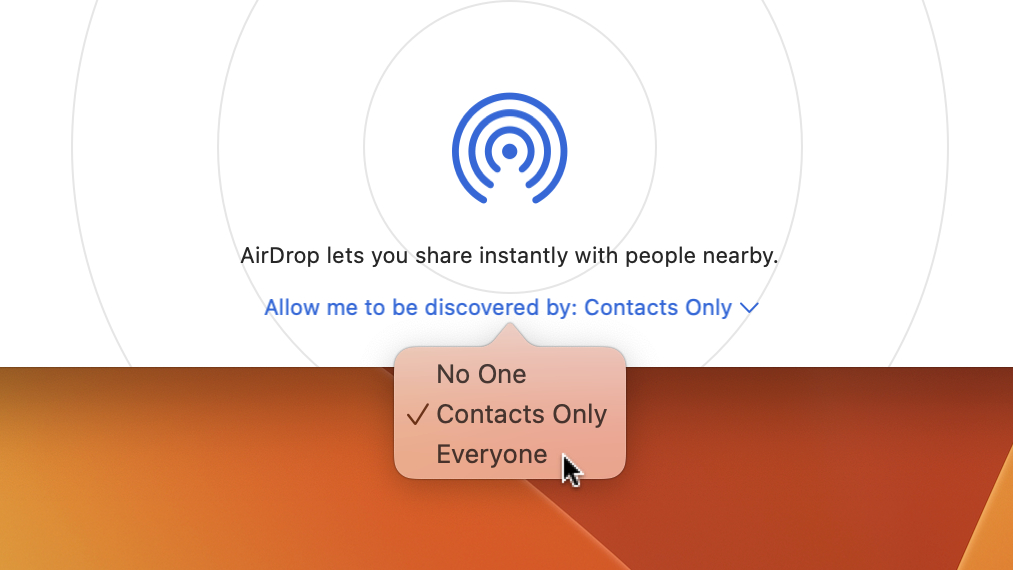
Having problems with AirDrop? Sometimes it’s as simple as turning it off and on again. From the System Settings app, turn off Wi-Fi and Bluetooth, then turn both back on. This may be all it takes to fix AirDrop.
If it doesn’t, you can also try adjusting your AirDrop settings. Open Finder, then click Go > AirDrop from the menu bar. Next to “Let me discover,” select All and try sending or receiving the file again. If it works, it’s likely that you previously set AirDrop to only receive files from contacts (or no one at all) and the sender was not in your contact list.
Wi-Fi is not working
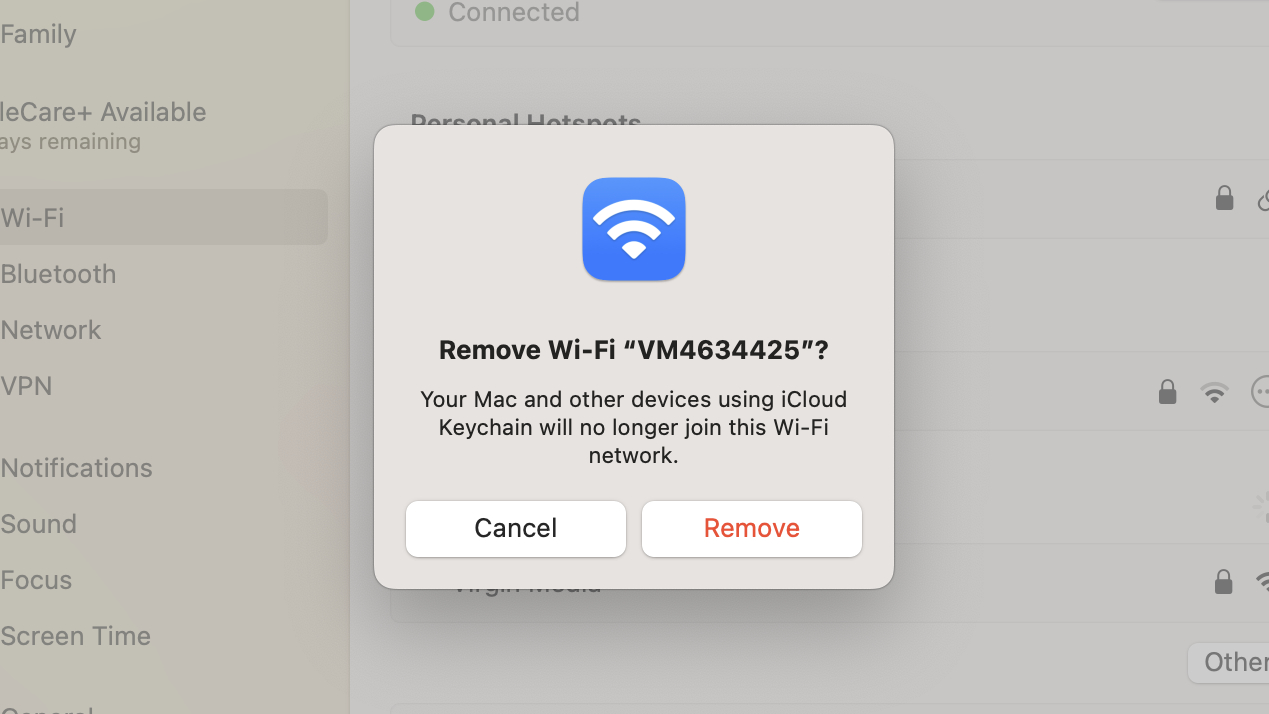
Wi-Fi turned off? Try restarting your Mac in safe mode. If your internet connection is restored, this indicates an app or extension fault.
Alternatively, try forgetting your current network settings and then reconnecting to your Wi-Fi. To do this, open System Preferences and click Wi-Fi in the sidebar. Under Known Networks, click … next to the network you are currently connected to (it will have a check mark next to it) and click Forget this network > Delete. Then try connecting again from the list of other networks. You’ll need your Wi-Fi password for the last step, so make sure you have it handy.
Battery life is very short
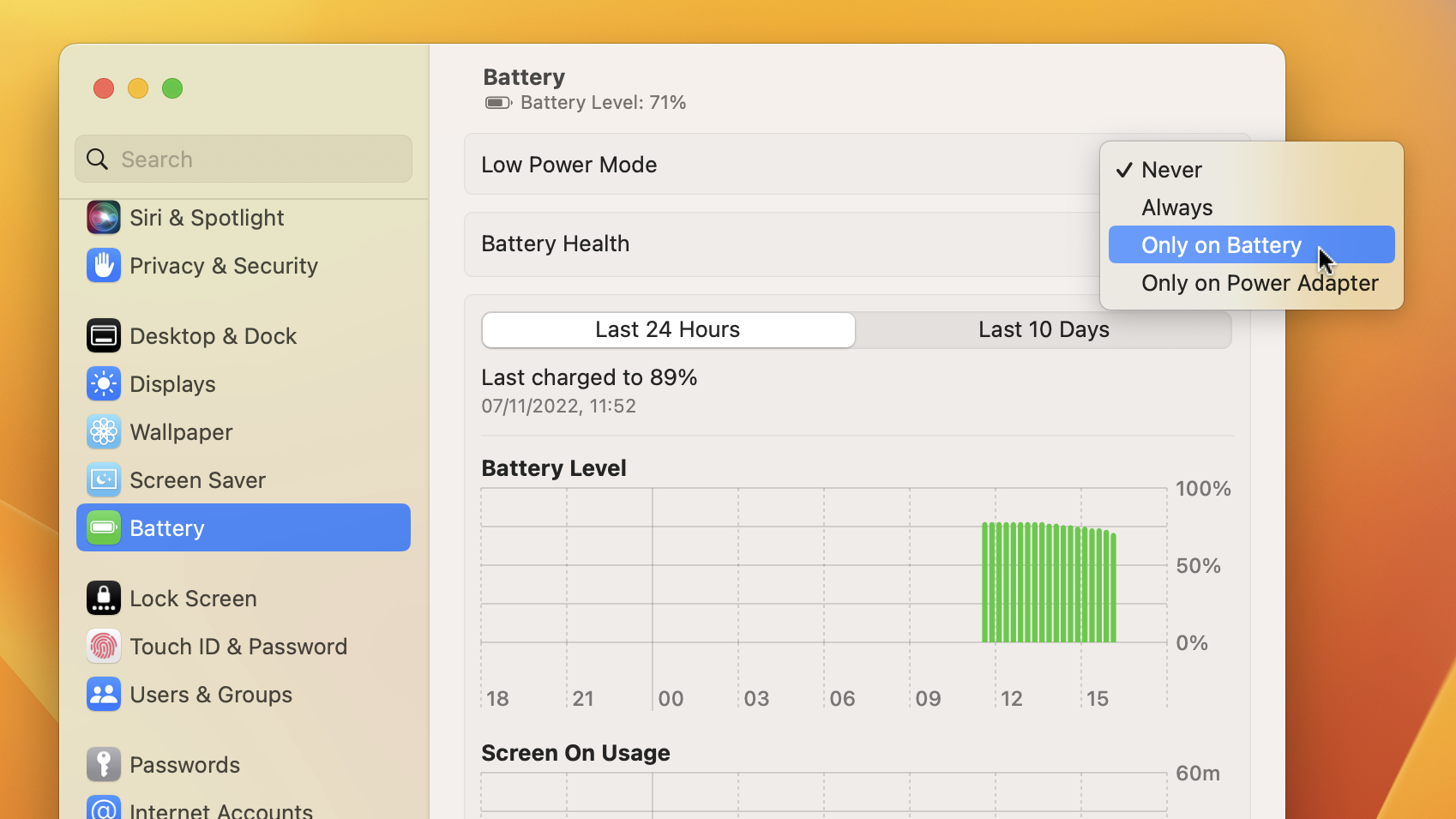
When you first upgrade to macOS Ventura, you may find that your battery drains faster than expected. This could just be because macOS is setting things up in the background – once that’s done, your battery performance may return to normal.
You can also try changing the battery settings. Open System Preferences and click Battery in the sidebar. You can enable low power mode or click options to optimize video streaming for battery life.
Additionally, make sure both macOS and your apps are up to date. Developers often fix issues that cause battery drain, so a quick app update can fix this problem. You can also try switching to apps that are less taxing on your Mac – Google Chrome is a known resource drain, which in turn can negatively affect your Mac’s battery life.
Running out of storage space
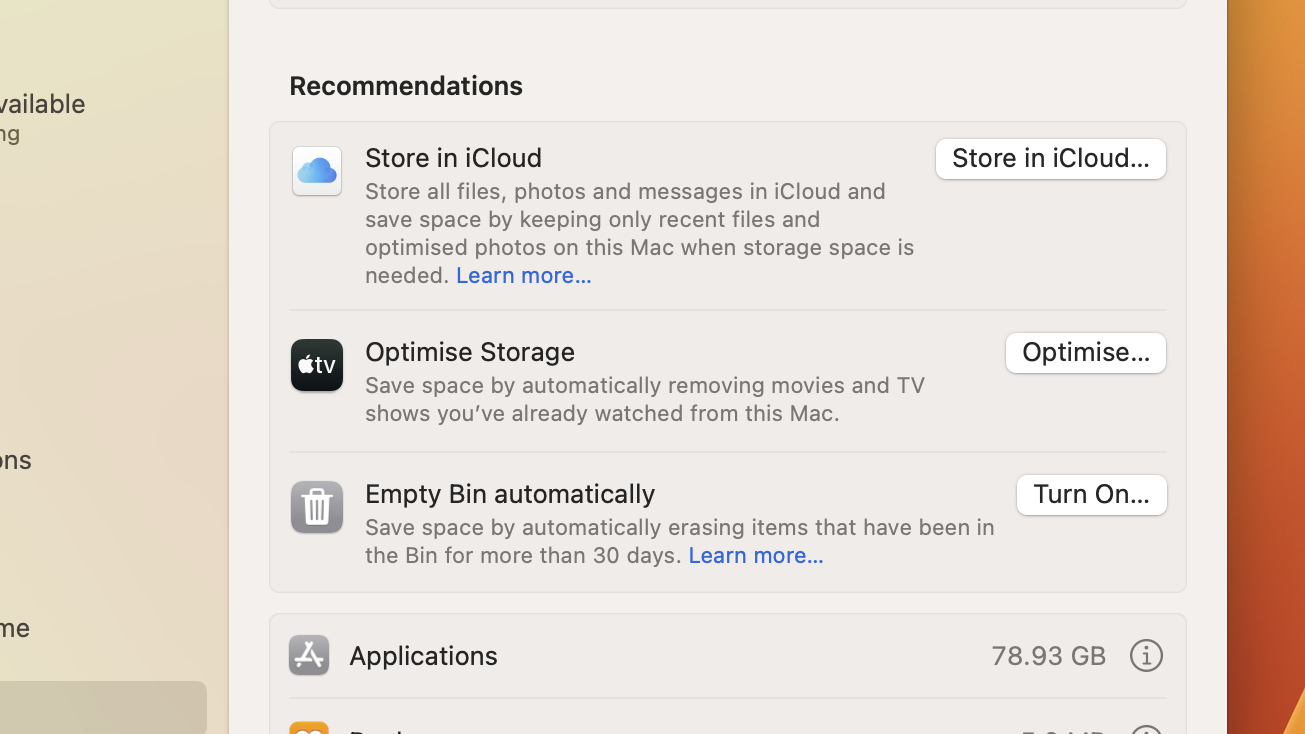
As your Mac’s storage drive fills up, you may notice that your computer starts to slow down. The easiest way to free up space—and thereby speed up your Mac—is to uninstall old and large apps you no longer use. Another reliable way to help is to empty the trash regularly.
And there’s a third way: the optimized storage feature in macOS Ventura. Open the System Settings app and go to General > Save. Under Recommendations, click Optimize Storage (if it appears). It will automatically delete old movies and email attachments to free up space.
The drive needs to be repaired
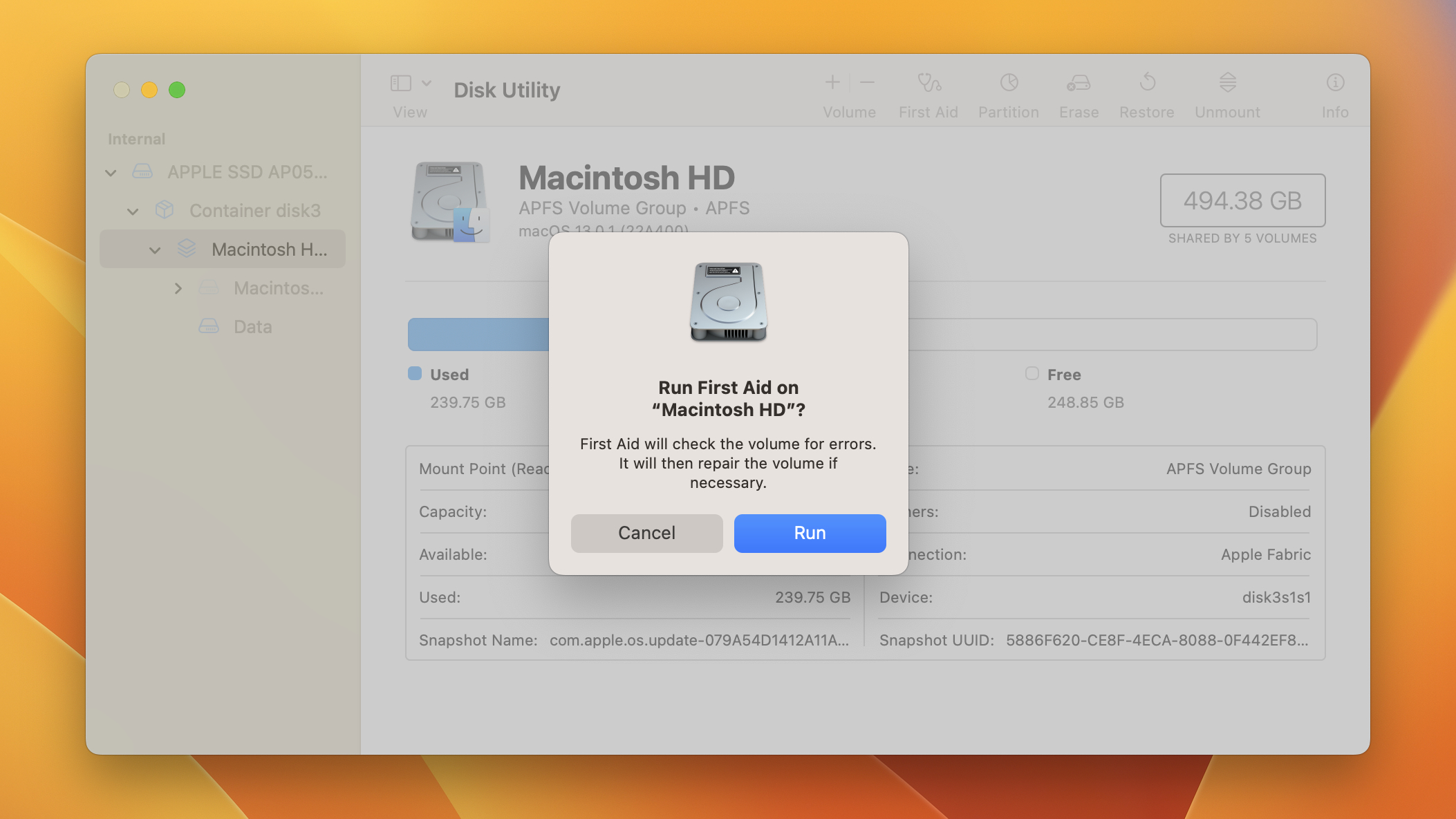
Sometimes, your Mac may not boot up properly. Don’t panic if this happens to you – it can be fixed using Disk Utility. First, restart your Mac. If you have an Apple Silicon Mac, press and hold the power button until you see “Startup options.” For Intel Macs, restart your Mac and hold down Command and R until Startup Options appears.
Click now Options > ContinueSelect a language, then click Disk Utility > Continue. From the menu bar, click View > Show all devices. Now click on your startup drive in the sidebar and click on it First Aid > Run. Let First Aid do its thing, then select “Restart” from the Apple icon in the menu bar once it’s done.
Problems with iCloud
Apple’s iCloud is a great way to store your files in the cloud, but it can have its problems. Whether your iCloud account won’t sync or is causing you some other pain, often the first thing to try is signing out and back in. In the System Preferences app, click your Apple ID in the upper-left corner, then scroll to the bottom and click Sign Out. Once you log out, try logging in again from the same menu.
Have you recently changed your iCloud password? When you do this, you’ll need to sign out of any iCloud services you’re using (including on other devices) and sign in again, or you may experience issues with those services. Just log out, then use your new password to log in again.
The app won’t shut down
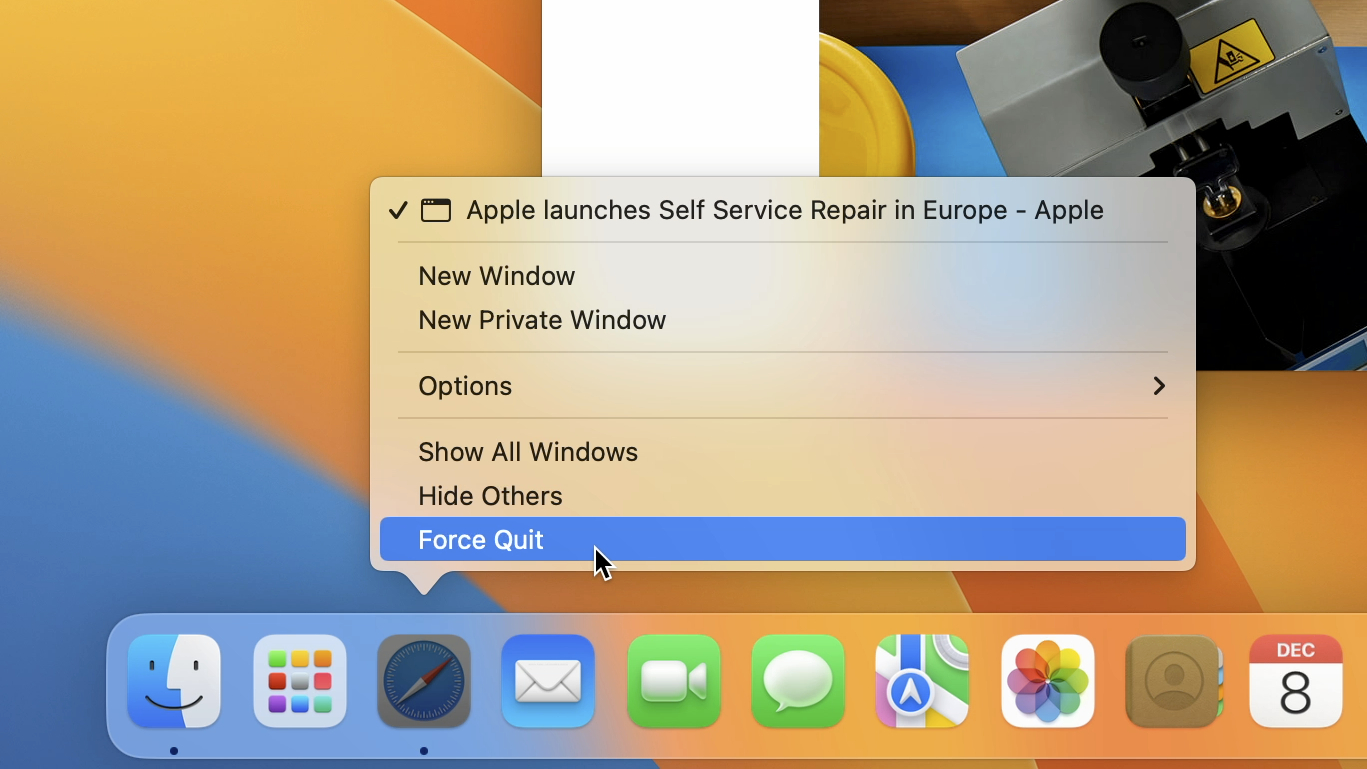
From time to time, the app you use hangs, freezes, or fails to launch when you want it to. Fortunately, there’s a built-in way to close the annoying app, even when it refuses to quit normally.
In such cases, right-click the app icon in the Dock, then Hold down the Option key. This will change the Quit command in the context menu to Force Quit. Click it and the app should close, even if it’s not responding. Alternatively, you can click the Apple icon in the menu bar and click He left by force (or press Option, Command, and Escape together), then select an application from the Force Quit Applications window.
Delete duplicate photos
In 2022, Apple introduced a new feature in iOS 16 that automatically detects and removes duplicates, and the same feature is featured in macOS Ventura. Even better, it’s incredibly easy to use.
First, open the Photos app. In the left sidebar you may notice an option called Duplicates. Click on it and you’ll see all the duplicate photos found by Photos. Go through the list and select any duplicate images, then click Merge [number] Duplicates. This will select the best quality photo for you, ensure that all relevant data is present from both images, then remove unnecessary extras.
Widget data is not updated
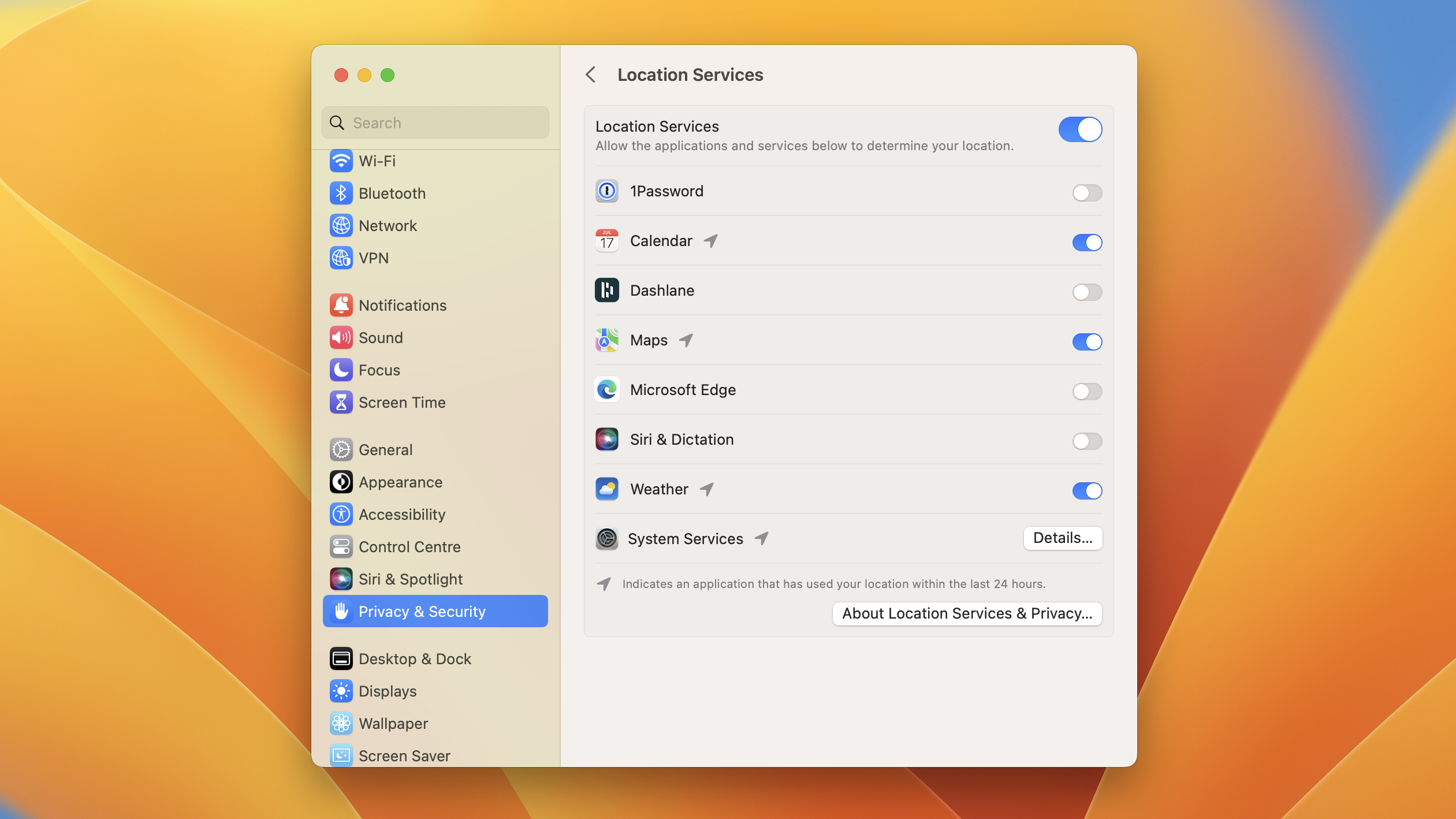
The Notification Center in macOS Ventura lets you display multiple widgets containing useful information. However, sometimes they may display incorrect data or stop updating properly. Often this is because there’s a problem with the location data they’re using – you’ll see this in weather widgets or ones that show the time, for example.
To resolve the issue, open System Preferences and click Privacy & Security > Location Services. From here, find the app whose widget is having issues (for example, the weather app) and turn off its location services, then turn them back on. Alternatively, you can try turning off location services entirely from the same menu, then re-enabling the toggle.
[ad_2]
Source link

